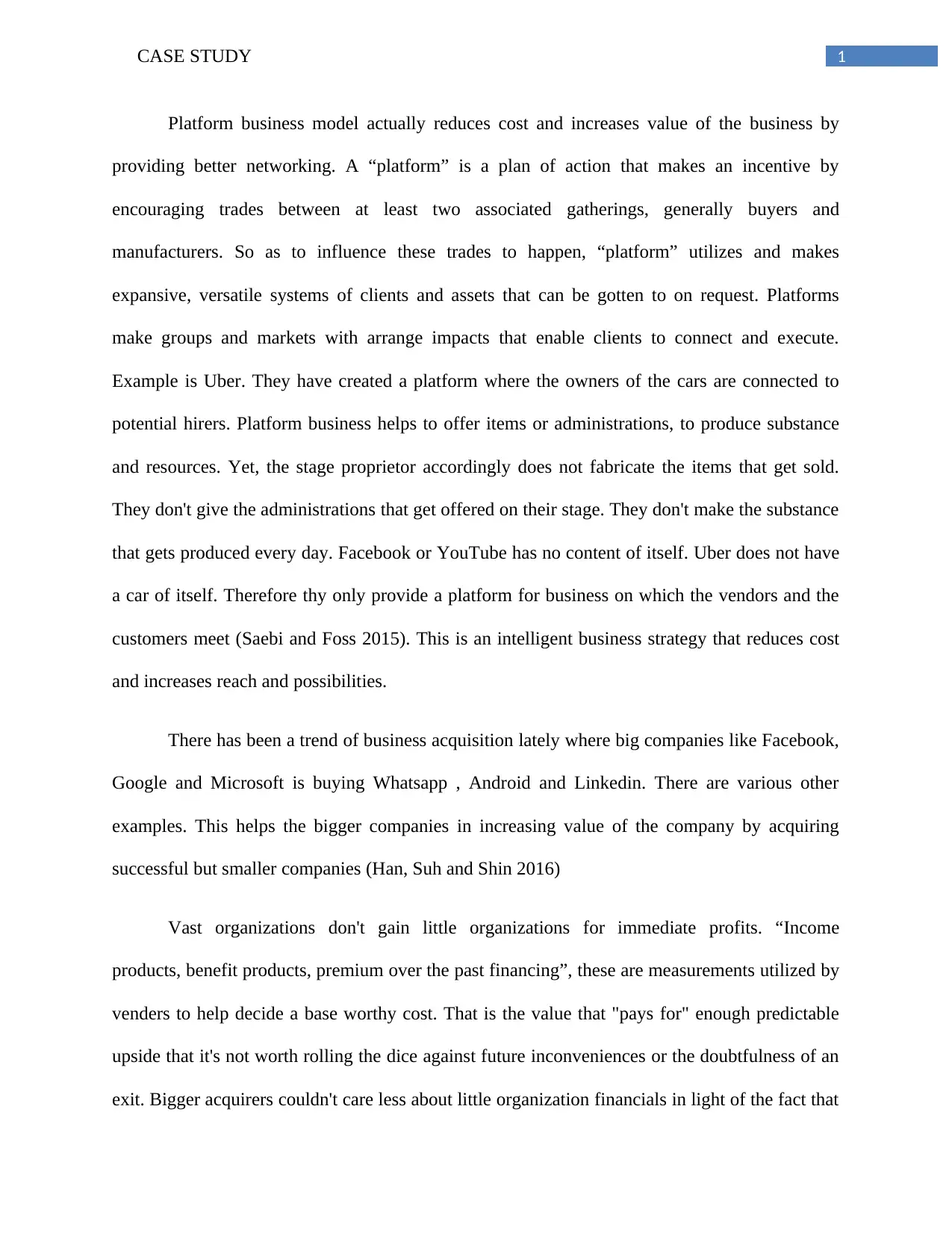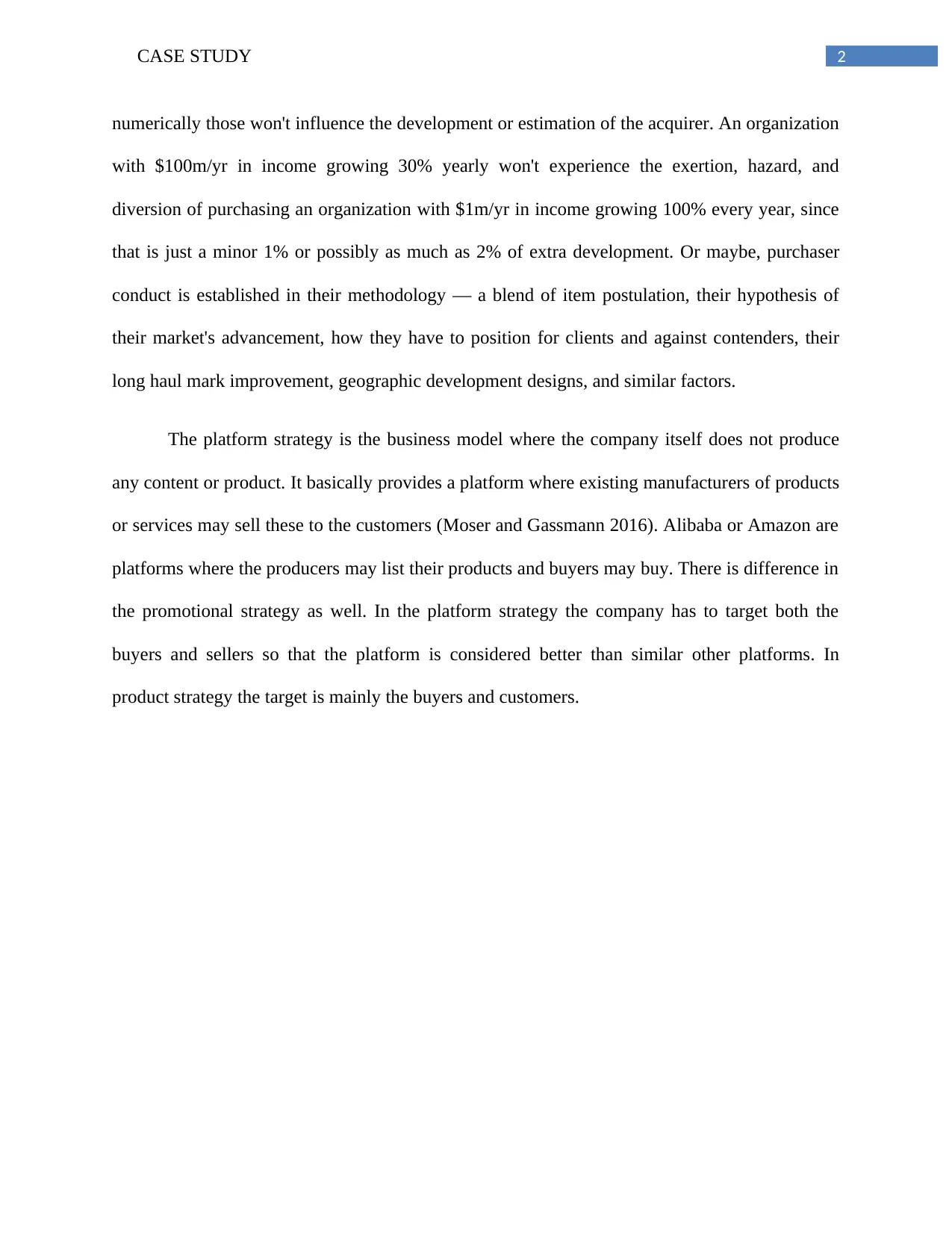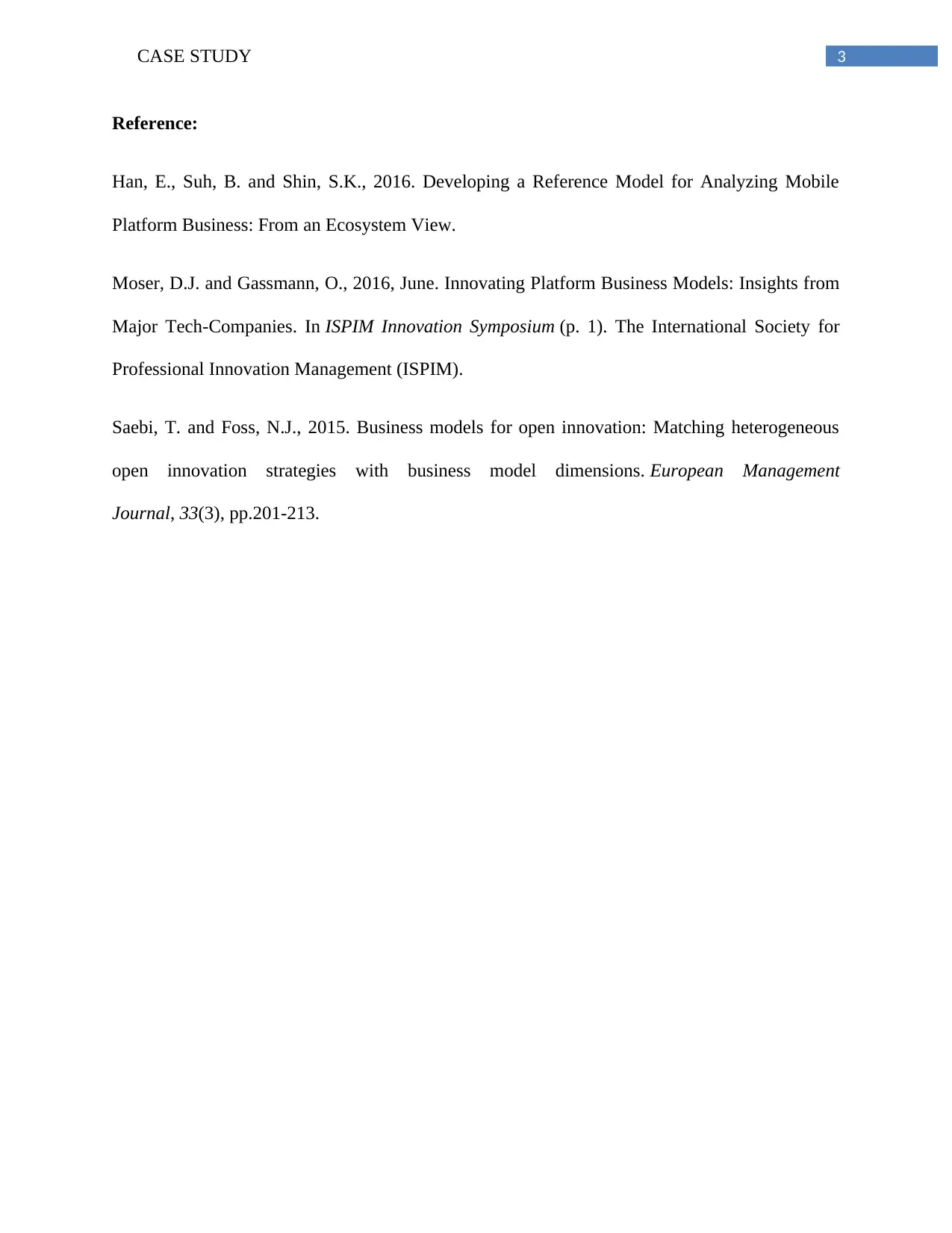Case Study: Platform Business Model Analysis, Examples, and Strategies
VerifiedAdded on 2021/06/17
|4
|724
|145
Case Study
AI Summary
This case study examines the platform business model, a strategy where companies provide a platform for transactions between buyers and sellers without directly producing goods or services. It highlights how platforms like Uber, Facebook, and Amazon reduce costs and increase value through network effects and ecosystem creation. The study discusses the trend of acquisitions by larger companies to expand their platforms and the strategic considerations behind these moves, focusing on factors beyond immediate financial returns. It contrasts platform business models with traditional product strategies, emphasizing the importance of targeting both buyers and sellers to build a successful platform. The provided references support the analysis with insights into mobile platform business models, innovation, and open innovation strategies.
1 out of 4











![[object Object]](/_next/static/media/star-bottom.7253800d.svg)